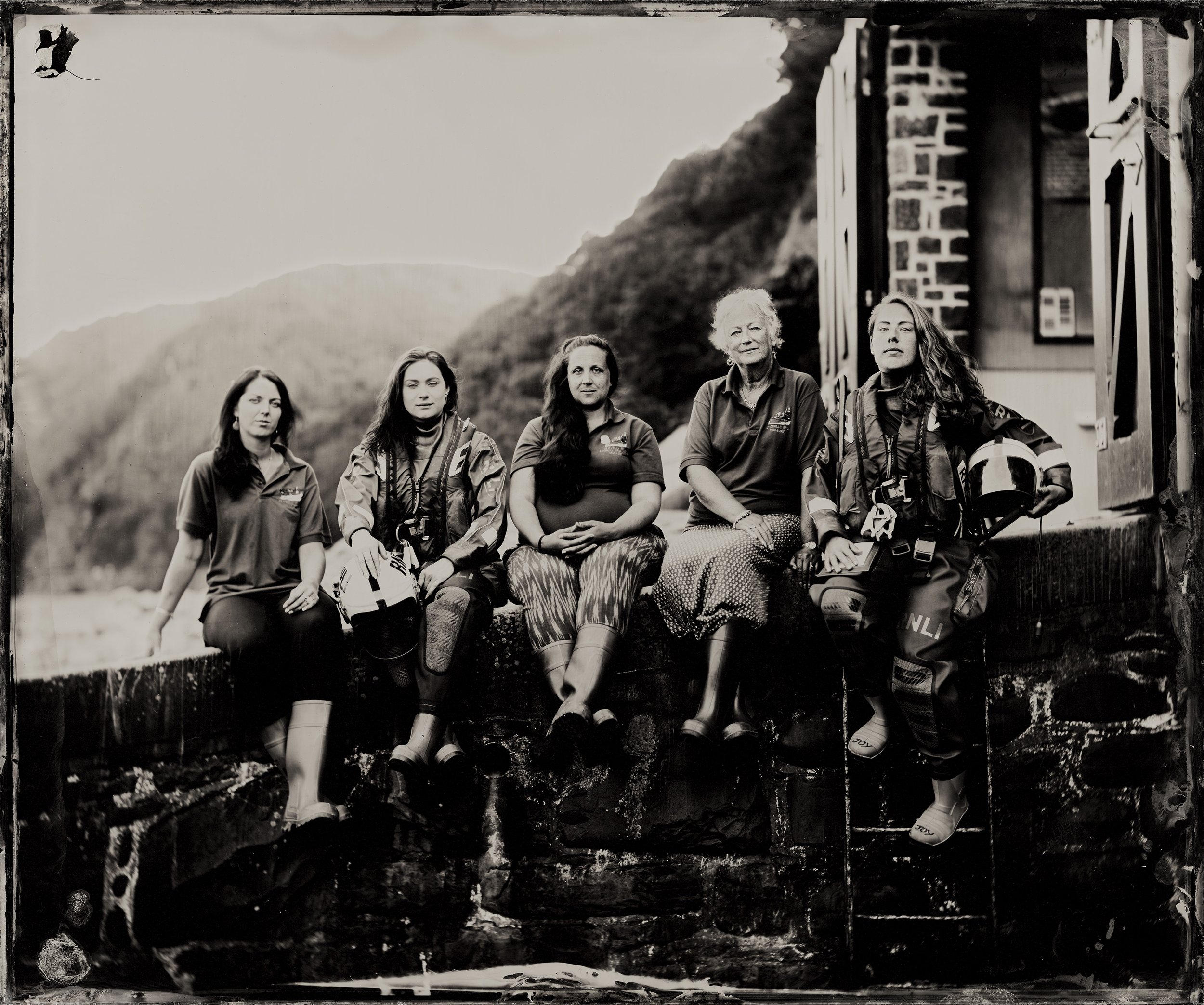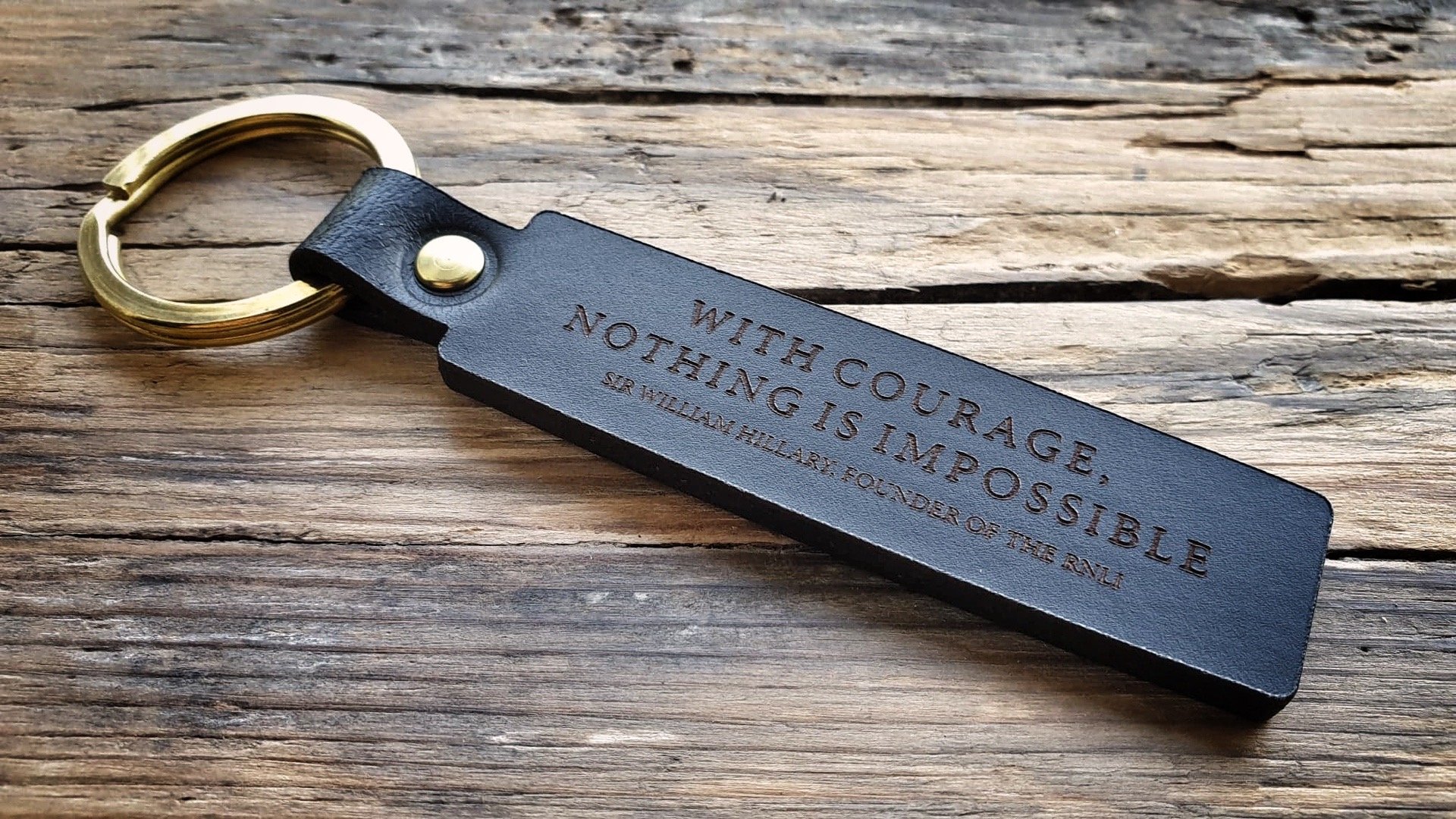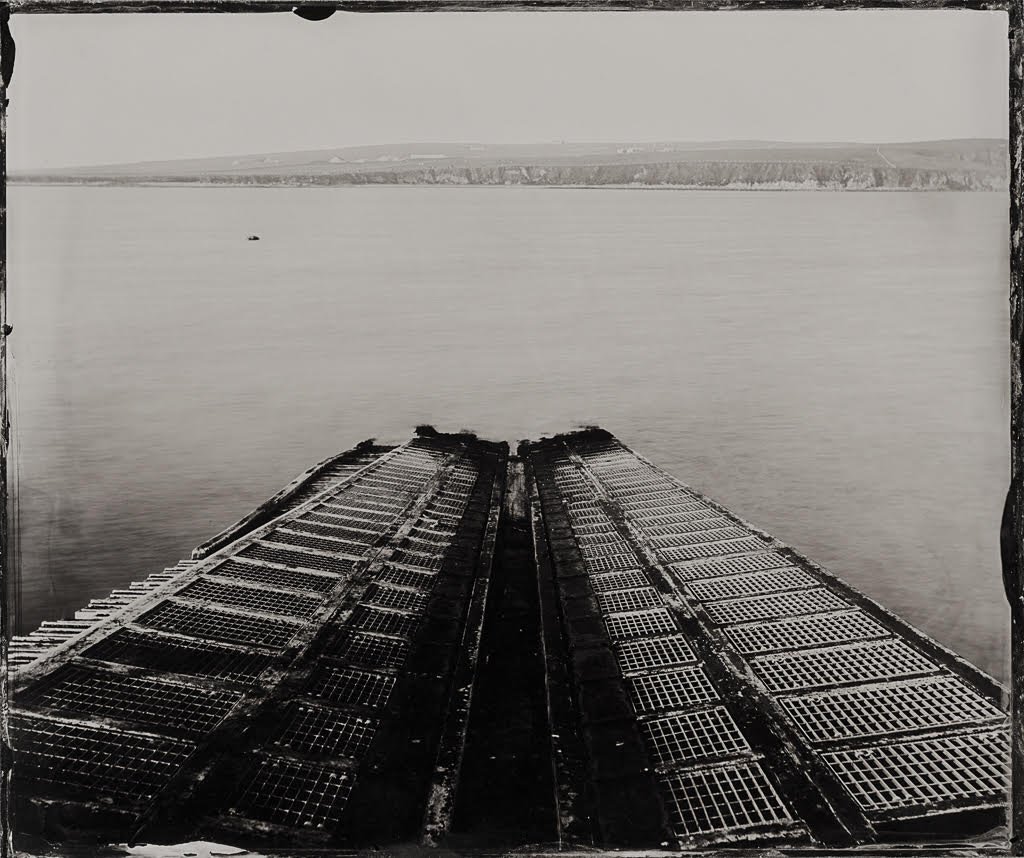Travelling the coast in a decommissioned ambulance, photographer Jack Lowe is capturing the crew of all 238 RNLI lifeboat stations in the UK and Ireland on glass. At each lifeboat station, he captures three things: the boathouse view (of the waters they’re protecting), a portrait of every coxswain or senior helm and a group portrait of the volunteer crew.
In 2016 – a year into his project – Jack spoke to Joe Stebbing for issue five of Ernest, sharing an insight into his epic tour of the coast, the wet collodion process and his mobile darkroom, a decommissioned ambulance named Neena. Scroll down to read the original article and to find out how the project is going, five years on.
Jack Lowe has put a successful career on the line to embark on a self-funded project to photograph the crew of 238 RNLI lifeboat stations in the UK and Ireland using a Victorian method called wet plate collodion.
The technique is unapologetically analogue, but far from simple. Chemicals are applied to glass, whichis then exposed to light through the lens of his 110-year- old camera and developed in his mobile darkroom, Neena. There is no post-production, and adjustments are made for the slightest change of conditions on the quayside. A single photograph, or plate, can take more than an hour to prepare, compose and ‘make’.
As the plate is developed under the red glow of Neena’s safelights, the reason for the project and his choice of method becomes clear. The plates capture stunning levels of detail and depth, and yet so much more – a plate captures a story and a moment in time, reflected in light and shadow on the sea-weathered faces of its subjects.
JS: How did this project come about?
JL: Let’s call it a midlife correction. I’d reached a point in my life where I had to answer a question: “Do I want to spend the rest of my working days in front of computer?” The answer was an emphatic “No”. So I came up with the Lifeboat Station Project – a combination of my love of photography, the sea and the RNLI.
JS: Why photograph lifeboat crews?
JL: The RNLI strikes a chord for me on many levels.These crew members are volunteers, risking their own lives to save others at sea.They’re embedded in their communities – they might also be fishermen, farmers or teachers. For a rescue organisation to rely on donations and the goodwill of its volunteers is really quite special.
RNLI Minehead helmsmen
JS: Why use the wet plate collodion method?
JL: With this process, I’m making something irreproducible and uneditable.That plate of glass was in the camera, at that location, at that time, and becomes a completely unique photograph. I love that.
JS: Tell us about Neena – she sounds awesome.
JL: Neena is a decommissioned NHS ambulance, hence the name – get it? Built on a Ford Transit chassis, she has a spacious saloon in the back, which I’ve converted into a darkroom. She has two sets of LED lighting (one white one deep red), a fold-down step, extraction fans and she even has an intercom. Basically, yes, she is awesome.
JS: What is the process from lens to finished plate?
JL: First, I pour a chemical called collodion onto the centre of a piece of polished glass. I direct the liquid to each corner of the plate – this is called flowing the plate. The collodion needs to reach an optimum set point (before it starts to dry) so I can place it in a light-tight box containing silver nitrate. Here, a chemical reaction takes place, which makes the plate light-sensitive.
After three minutes, I switch on the red light for darkroom conditions. I draw the plate out of the silver nitrate and place it into a holder designed to fit on the back of the camera. Once loaded, I carry it from Neena to the camera – bear in mind that might mean marching 250m along a pier! I fit the plate holder onto the back of the camera, make the exposure, then take the holder back to Neena.There, I pour developer onto the plate and the image appears within seconds as a negative.
Once development has been halted with water, I open the door for the truly magical part: I pour fixer onto the plate.The ‘oohs’ and ‘aahs’, and even tears, from the crew come thick and fast as the plate transforms from negative to positive before our eyes.
The process produces a 12x10in ambrotype – a positive photograph on a plate of glass.
Five women of RNLI Clovelly, Devon
JS: Victorian photographs of sea faring folk seem to offer a true glimpse of the subjects’ character – do you see this emerging in your photographs?
JL: Yes, definitely.The photographs become a facet of the humility and generosity that exist within coastal communities and these lifeboat crews.
I’ve been most struck by the coxswains. Many have held their position for years – some are even the second or third generation.They have a calmness about them that can really take you aback.This reflects really well in the photographs – they seem to have an exceptional talent for standing still during the long exposures!
JS: What will be the outcome of this project?
JL: Eventually, this will form a book and an exhibition of over 700 photographs documenting the RNLI. I hope it will be a worthwhile legacy.




















